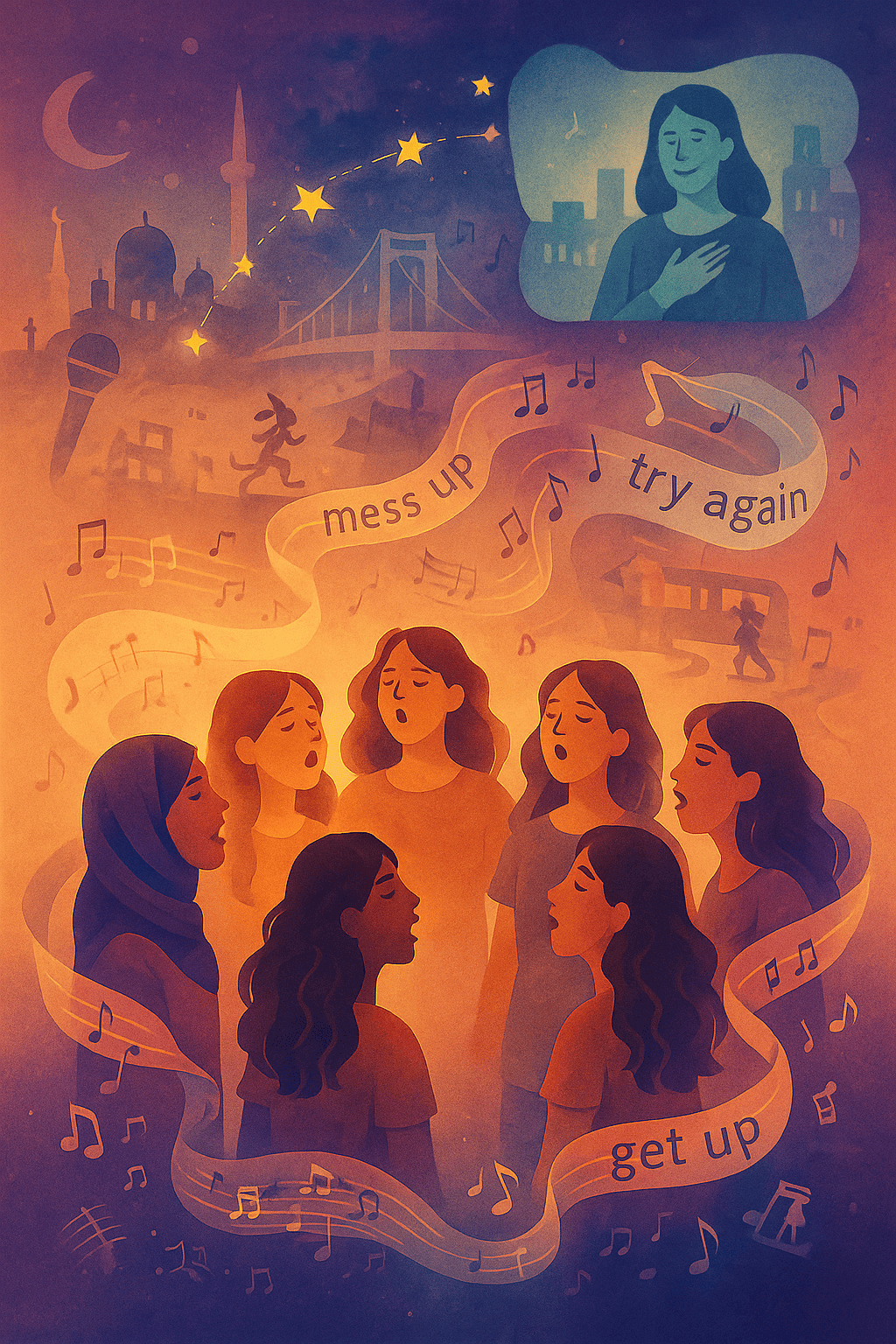The final notes lingered just a moment longer than usual—slightly off-mic, slightly out of sync, but unmistakably unified. From Hatay to Pittsburgh, from living rooms to laptops, the girls of Be the Voice of Girls sang together: “Try Everything.” It wasn’t just the lyrics of a Disney song anymore. It had become a motto, a mantra, a farewell that wasn’t really a goodbye.
June 16 marked the penultimate session of this year’s Be the Voice of Girls cohort and the last with Heather and Ece, the dynamic teaching duo behind English as a Singing Language. For nine months, their virtual classroom was a place where grammar came wrapped in melody, where colloquial contractions turned into cultural bridges, and where breakout rooms weren’t detours but destinations of connection. If the farewell felt emotional, it was because the relationship between these teachers and the girls had become more than curricular—it had become personal.
It made sense, then, that this final session together would revolve around “Try Everything,” Shakira’s anthem of resilience from the animated film Zootopia. For Heather, it’s a personal favorite. Years ago, she and Ece had even recorded an entire podcast episode exploring the song’s playful phrasal verbs and its deeper motivational pull. That episode—still available online—resonates just as strongly now as it did then.
The girls didn’t just listen to the lyrics. They broke them apart, discussed the structure, found the verbs, and laughed through the refrains. They learned that “give up” and “get up” are more than just phrasal verbs—they’re life strategies. That sometimes you “mess up,” but you can “start again.” That “making new mistakes” isn’t failure, it’s growth.
And then, in a moment that bridged teacher and student, Carl—co-founder and U.S. program architect—shared his own recent story of trying everything. He’d applied to become a police officer, chasing a long-dormant ambition. He aced the written test but missed the physical exam cutoff by two sit-ups. “I did extra push-ups,” he quipped, “and even asked if I could transfer some of them over.” He’ll try again in six months. And yes, he played the Zootopia clip of Judy Hopps falling flat on her back at the police academy, only to rise again. “Adults mess up, too,” he told the girls. “We just do it with more paperwork.”
That story wasn’t just comic relief. It was a lived metaphor for everything BVG stands for: the permission to stumble, the courage to continue, and the confidence to own your journey out loud.
Throughout the session, the mood remained a careful balance of celebration and emotion. Heather and Ece knew they were closing a chapter—not just of a module, but of their own participation in this year’s program. The girls knew it too. In the chat box and the final moments, heartfelt thank-yous poured in. There were promises to keep learning, to keep singing, to remember the lyrics and the laughter.
In truth, Heather and Ece had become something like pillars in the curriculum, their voices as recognizable as their warm smiles on screen. They offered consistency in a program built around creativity. They brought structure to the whirlwind of arts-based learning. And they did it with grace, humor, and a profound belief in the girls’ potential. As Mirey, BVG’s local coordinator, noted during the session’s close, they weren’t just guest teachers—they were core members of the BVG family.
That’s what makes this penultimate session feel like more than just another lesson. It was a culmination. A chorus. A handoff. One final session still remains—a music therapy workshop led by Sydney Zupnick of A Tribe for Jazz, who first joined the girls back in December. It will be a fitting note to end on. But already, the girls are stepping into summer not just with improved English or a better grasp of phrasal verbs, but with a community. A voice. A sense of self.
It’s easy to focus on the tools BVG uses—songs, interviews, digital art, poetry. But those are conduits. The true impact lies in the moments between: in a girl’s first time speaking up during a breakout room, in her decision to sing along despite her accent, in her realization that somewhere, across the world, someone is listening and cares.
Two hours a week. Thirty-six weeks. That’s 72 hours of encouragement, creativity, and courageous exchange. And for the girls of Hatay, that’s 72 hours of knowing they matter.
As the virtual room closed, one could imagine the melody still echoing faintly behind muted microphones. Oh, oh, oh, oh, oh, try everything.
And for those who want to hear the origin story of this BVG anthem, the podcast episode by Heather and Ece can be found here.
Because if Be the Voice of Girls has taught us anything, it’s that trying everything is not a risk—it’s the beginning of finding your voice.


